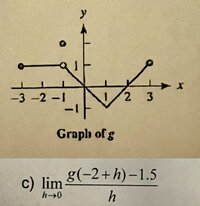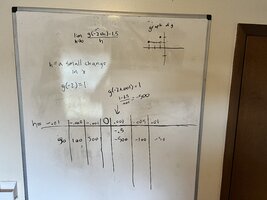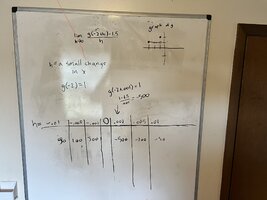golden_ratio
New member
- Joined
- Oct 16, 2022
- Messages
- 8
I know the answer is 1/2 from the back of the book. But I can’t reverse engineer that answer to figure out how the problem is solved.
Things I know:
• Lim h—>0 is generally referring to the limit of the function as the slope approaches 0
•g(-2) = 1 and g’(-2)=0. I don’t know what g(-2+h) is. The slope is zero, so g(-2+h) would be zero. But (0-1.5)/0 is undefined. So I’m completely wrong there.
Idk. Any help?
Things I know:
• Lim h—>0 is generally referring to the limit of the function as the slope approaches 0
•g(-2) = 1 and g’(-2)=0. I don’t know what g(-2+h) is. The slope is zero, so g(-2+h) would be zero. But (0-1.5)/0 is undefined. So I’m completely wrong there.
Idk. Any help?



